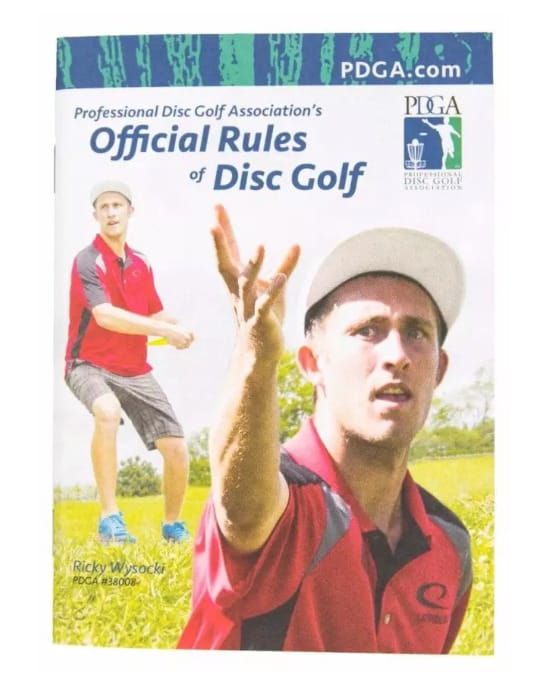How to Take Relief from OB
TOC
Table of Contents
Taking an out of bounds (OB) penalty stroke is never fun. It can derail your momentum, whether you are in a casual disc golf round or an important tournament round. It’s basically an extra stroke on top of your score for the hole. Of course, you want to try and avoid OB penalties as much as you can. However, they are bound to happen every now and again. Sometimes, you just have to lick your wounds and make the best of a bad situation. The last thing you want to do is let one bad break ruin your entire round!
It also helps you know the official rules of disc golf when it comes to know parts of the course design are considered out of bounds and then how to take relief from OB lines or obstacles. There are some cases where optional relief can help you, and then there are other strategies you can utilize to minimize the damage when your disc is officially out of bounds.
What if My Disc is in Bounds Near an OB Line?
First, let’s look at an instance where the OB rules of disc golf can actually help you. If your disc is within a meter (a little over 3 feet) from any out of bounds line on a disc golf course, you always have the option to take free relief of up to a meter away from the line. Use your mini marker disc and usually just take three heel-to-toe steps to approximate your meter. You measure the meter directly perpendicular in relation to the OB line, even if the relief takes you closer to the basket or improves your stance with a flatter playing surface. You don’t have to take relief if you like your original spot and you don’t have to take a full meter if you don’t want, though it’s important to know that you cannot be standing in an out of bounds area when you release the disc on your next throw. That is an illegal stance that will result in a penalty stroke.
What if My Disc Goes Out of Bounds?

Next, let’s look at the situation where your disc is clearly out of bounds. It is a group decision to determine where the thrown disc last crossed in bounds (whether it was flying in the air or sliding/rolling on the ground). From here, you actually have a few options:
- Meter Relief—You can take your meter in from the OB like just like the free relief above, with one OB penalty stroke applied to your score for the hole.
- Sight Line Relief—One of the newer PDGA rules in recent years is the line-of-sight relief from OB. You mark where the disc was last in bounds and you can move your new mark back as far as you want, drawing an imaginary straight line between you, your mini marker disc and the basket. This is a rule you can take advantage of in certain situations because it may give you a better throwing angle around trees, fences, brush or other obstacles that are in the out of bounds area where your disc landed.
- Rethrow—You always have the option to rethrow from your previous lie with a one stroke penalty. Whether that previous throw was from the tee pad, the fairway or 10 feet from the basket, it doesn’t matter. Sometimes, an OB lie is so bad that you are better off just going back to where you were and rethrowing. A great example of this is you hit the cage on a relatively short putt and the disc rolls further away and out of bounds. Rather than going to where the disc went OB, you can just rethrow from your previous spot. You are taking the penalty stroke either way, so why not re-attempt the easier putt?
- Drop Zone—In some tournaments—and even on some standard recreational disc golf courses—there will be a designated drop zone when you fail to throw a tee shot in bounds. If there is a drop zone, you must use it for your next shot. If you proceed to throw your next shot OB again, then the play from there will be determined by the course’s rules for that particular hole or those specified by a TD in competitive play.
- Two-Meter Rule—You will find the two-meter play in some tournaments, with this controversial rule being mostly observed only on the West Coast. It won’t be in effect in most tournaments. If it is, the tournament director will let you know in the official rules for that event. The two-meter rule states that if your disc is suspended more than two-meters (about 6.5 feet) above the ground (usually in a tree or on top of a building structure), then you will have to take a one-stroke penalty. In this case, you place your mini marker disc directly below your disc and play the rest of the hole out from there.
What if I Can’t Find My Disc?
If you throw your disc out of bounds, in a tree or anywhere else and you cannot find and clearly identify it, it is considered a “lost disc.” You have three minutes to search. If you cannot find it, you must go back to your previous spot and throw from there with a one-stroke penalty. A lost disc supersedes any OB or hazard rules (including the two-meter rule if in effect). You do not have to take a double penalty if you lose your disc in an out of bounds area. You just take the one penalty stroke and rethrow from your previous lie.
When Should I Take a Provisional Throw?

 If you are in a disc golf tournament, you might run into this situation. You throw a disc and you aren’t 100% sure if it is in bounds or not. Maybe the disc golf tournament rules aren’t clear or the out of bounds area is up for debate. In cases where there is some sort of out of bounds line it’s hard to tell whether or not the disc is in bounds, it will be a group decision. Your cardmates must come to an agreement on a ruling.
If you are in a disc golf tournament, you might run into this situation. You throw a disc and you aren’t 100% sure if it is in bounds or not. Maybe the disc golf tournament rules aren’t clear or the out of bounds area is up for debate. In cases where there is some sort of out of bounds line it’s hard to tell whether or not the disc is in bounds, it will be a group decision. Your cardmates must come to an agreement on a ruling.
If you are ever unsure about any disc golf rules or there is an area of the course that may or may not be considered out of bounds (and isn’t clearly covered on any pre-tournament rules sheets), you should always take a provisional. What you do is announce your intention to throw a provisional to your cardmates and play your next shot twice: once as if the disc was out of bounds and once as if the disc was in a casual area or in bounds. Then, you play out the hole from both spots and make note of both scores. Later, you can consult with the tournament director (TD) to determine a final official ruling before you submit your scorecard.
When you watch pro tournaments, you will see them taking advantage of every rule they can. This is simply smart play. You might see them going aggressively at a basket that is perched precariously close to an OB line. They weigh the risks against the rewards. If their disc goes OB, they aren’t worried because they know they’ll make the short comeback putt. It’s worth it to go for a birdie, eagle or even an ace because they know it’s still an easy par if they miss and go OB.
Disc golf course management is a different topic we’ll ultimately be covering on the DGU Blog. The important thing to take away from this article is that you need to know the rules and how to use them in your favor whenever possible. You may have an ugly OB stroke on the scorecard, but it may not be as damaging as you think if you make smart decisions after you’ve thrown out of bounds.
Personalized Disc Recommendations
Just answer a few questions and we’ll send you personalized recommendations within 24 hours.
GET PRO TIPS


